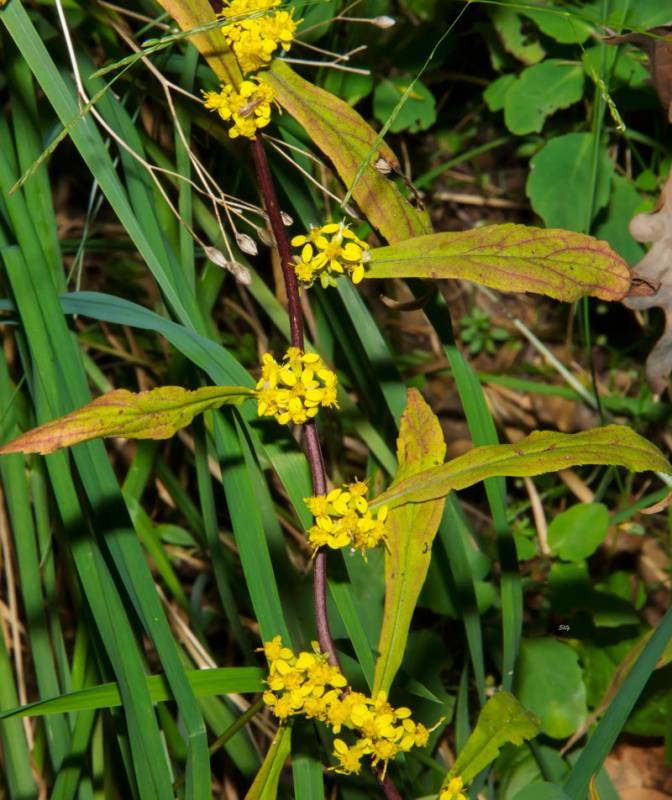Wildflower of the Month: Goldenrods important in fall gardens
Published 10:30 am Friday, November 15, 2019

- Blue-stemmed Goldnrod at the Mountain Lake Lodge near Pembroke, Virginia. The golden flowers are stunning with late-blooming white and purple asters, all providing ecosystem services. -- Submitted Helen Hamilton
|
Getting your Trinity Audio player ready...
|
Blue-stemmed Goldenrod
Solidago caesia
Unlike most goldenrods, this native perennial grows in woodlands and is a good choice for a shade garden. Little clusters of golden flowers are spaced along arching stems that become bluish as they age in late fall, the reason for the common name. The flowers are spaced with oblong leaves that have teeth and are sharply pointed, growing alternate on the stem. The plant never gets too tall, growing 1-3 feet in height.
Blue-stemmed goldenrod forms clumps and does not spread aggressively. While the plant prefers dappled light and well-drained soils, it will tolerate dry, rocky soil and drought. A shaded butterfly garden or woodland edge would be a desirable location.
Native wildlife love all goldenrods — the flowers are always crawling with native bees, wasps, and pollinating flies that collect nectar and pollen from the flowers, and songbirds eat the seeds. Deer and rabbits seem to leave it alone, although there are reports of deer browse on the leaves in woods.
Goldenrods do not cause hay fever. All members of the aster family produce pollen that is heavy and sticky and requires insects for pollination. Allergic reactions are caused by wind- pollinated plants like ragweed, grasses and trees like maple and pine that produce large amounts of light pollen carried on air.
Goldenrods are important in fall gardens, producing food for overwintering wildlife while other plants no longer make flowers and seeds. The golden flowers are stunning with late-blooming white and purple asters, all providing ecosystem services.
HELEN HAMILTON is past president of the John Clayton Chapter, Virginia Plant Society. For more information about native plants, visit www.vnps.org.





